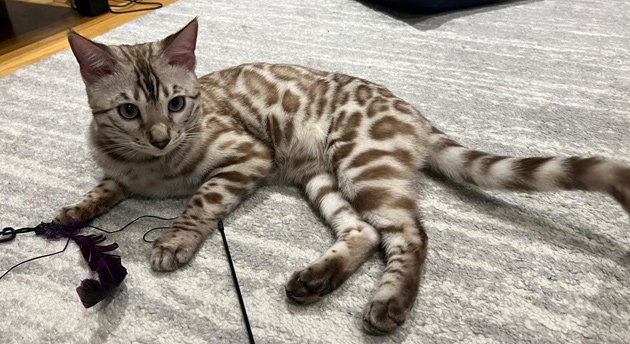
Nala went missing from her home on Dalrymple Street in Jamaica Plain around 2 p.m. on Jan. 22. Her owner is offering a $3,000 reward for her safe return, no questions asked.
If you spot her or know where she is, contact Kailee at 617-710-0948. Nala might have a purple harness on. She is spayed and microchipped.

Neighborhoods:
Like the job UHub is doing? Consider a contribution. Thanks!
Ad:
Comments
Hopefully she is indoors and
By anon
Sat, 02/04/2023 - 1:29am
Hopefully she is indoors and ok.
She's been spotted
By Sock_Puppet
Sat, 02/04/2023 - 10:35am
Her whole life.
Microchip isn’t working ?
By anon
Sat, 02/04/2023 - 10:38am
Microchip isn’t working ?
Excuse my ignorance
By Will LaTulippe
Sat, 02/04/2023 - 10:51am
But if we can microchip pets, why don't the chips have GPS in them? What size are the chips, and how small can you make GPS?
Power Requirements
By monkeynaut
Sat, 02/04/2023 - 11:17am
GPS trackers still need something to power them, and I don't think anyone wants to change the batteries on their cat, especially inside their cat. Plus, the total unit size is still too big to be implantable.
There are a variety of GPS dog collars out there. That only helps if your dog is genuinely lost, rather than stolen, as they're not exactly subtle devices.
A GPS collar would be great
By Waquiot
Sat, 02/04/2023 - 4:20pm
Except if one has an indoor cat.
I am hoping that this isn't a theft and, of course, that cat is reunited with owners soon.
usb type-c (for cat).
By schneidz
Sat, 02/04/2023 - 5:00pm
usb type-[i]c[/i] (for cat).
fitbit ace ?
By schneidz
Sun, 02/05/2023 - 7:02am
used to track children carry a charge for about 3 weeks (costs like $60).
Antennas and power
By Tim Mc.
Sat, 02/04/2023 - 5:57pm
The microchips used for pets are basically just a tiny RFID tag. They're read by a handheld reader that blasts them with radio waves and listen for an echo, essentially; the shape of that echo encodes an ID. They're about the size of a large grain of rice and require no built-in power source.
A GPS tracker has a much, much harder job: It has to have an antenna of the right size to listen to the weak radio signals from the satellites (at least 3 cm across according to Wikipedia); the antenna is actively driven by a resonater; there needs to be a little computer to there; and it needs to then broadcast that information somewhere. (4G cellular connection, maybe?) All of that's a lot of power and antenna, not something you'd want to implant. You can put it on a collar, but it's bulky and needs recharging.
Some wildlife radio collars work differently: You just have something that emits a signal, and you walk around with a directional antenna until you can triangulate on it. That requires special equipment for locating, and still needs recharging.
And then there's Apple's clever little tracker tags, which use Bluetooth to ping nearby phones with their IDs. This offloads a huge amount of power, processing, and antenna gain to the phones. But even this needs powering. I guess you could have a wireless charging mat under the pet's bed...
Hope they find her
By Matt
Sat, 02/04/2023 - 2:06pm
And the person refuses the reward.
have you seen your cat:
By schneidz
Sat, 02/04/2023 - 5:02pm
[img]https://d.justpo.st/images/2014/09/cbf4d3d8bdc97aa...
Any updates?
By ChrisF
Sun, 02/05/2023 - 10:41am
This is such a beautiful cat that I hope she is reunited with her human soon!
Add comment